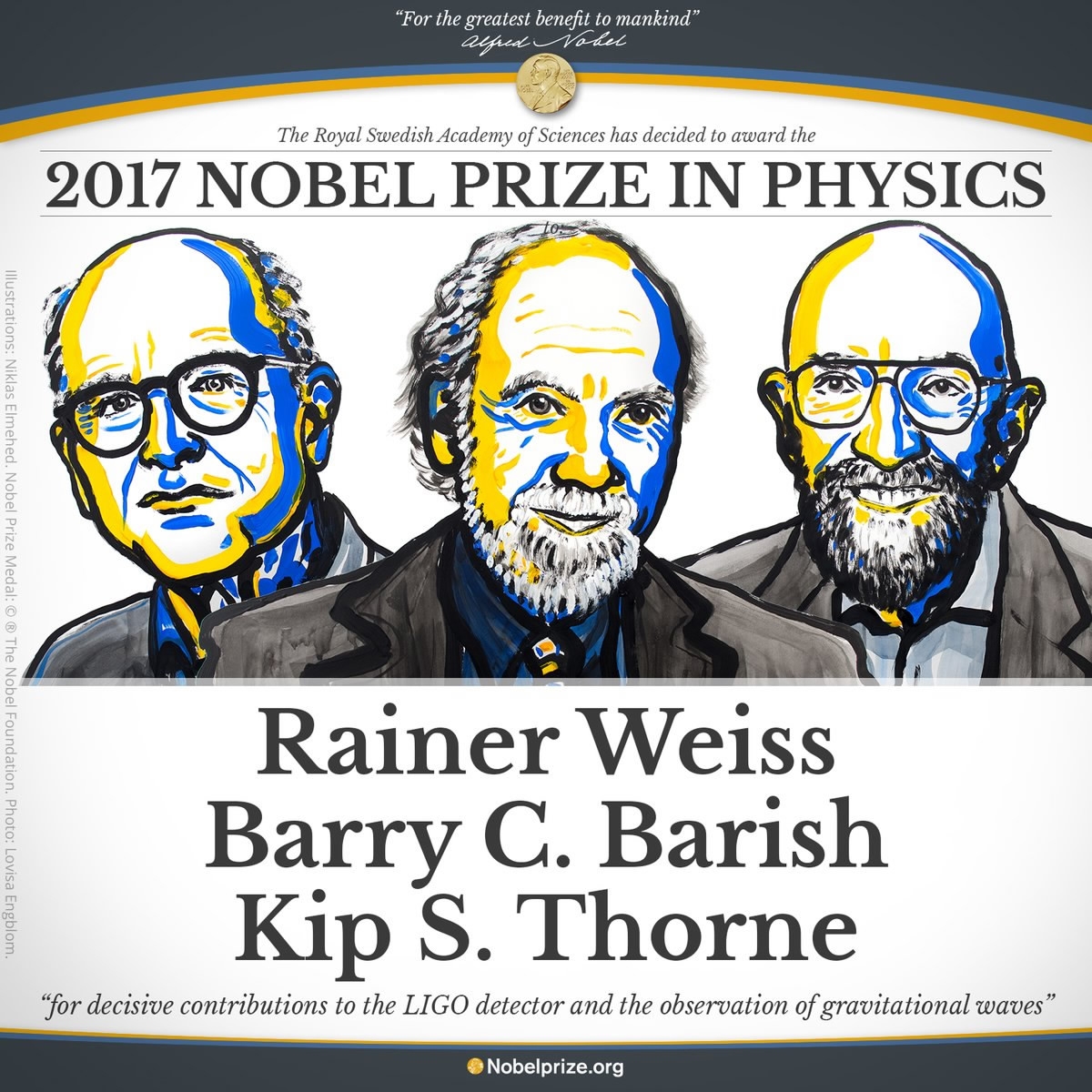Three US scientists were awarded the 2017 Nobel Prize in Physics on Tuesday in Sweden.
Announced by the Royal Swedish Academy of Sciences, the prize was divided — one half awarded to Rainer Weiss, the other half jointly to Barry C. Barish and Kip S. Thorne "for decisive contributions to the LIGO detector and the observation of gravitational waves."
About the laureates

Rainer Weiss (L), Barry C. Barish (C) and Kip S. Thorne. /Photo via Nobelprize.org
Rainer Weiss (L), Barry C. Barish (C) and Kip S. Thorne. /Photo via Nobelprize.org
Rainer Weiss: Born in 1932 in Berlin, Germany. Ph.D. 1962 from Massachusetts Institute of Technology, MIT, Cambridge, MA, USA. Professor of Physics, Massachusetts Institute of Technology, MIT, Cambridge, MA, USA.
Barry C. Barish: Born in 1936 in Omaha, NE, USA. Ph.D. 1962 from University of California, Berkeley, CA, USA. Linde Professor of Physics, California Institute of Technology, Pasadena, CA, USA
Kip S. Thorne: Born in 1940 in Logan, UT, USA. Ph.D. 1965 from Princeton University, NJ, USA. Feynman Professor of Theoretical Physics, California Institute of Technology, Pasadena, CA, USA
(Laureates' information via Nobelprize.org)
Gravitational waves finally captured
Predicted by Albert Einstein 100 years ago, the universe’s gravitational waves were observed on September 14, 2015 for the first time. The waves spread at the speed of light, filling the universe, as Einstein described in his general theory of relativity.
The waves are always created when a mass accelerates, like when an ice-skater pirouettes or a pair of black holes rotate around each other.
Einstein believed it would never be possible to measure them.
The gravitational waves came from a collision between two black holes and took 1.3 billion years for the waves to arrive at the LIGO detector, or the Laser Interferometer Gravitational-Wave Observatory, in the US.
According to the press release from the academy, the LIGO project’s achievement was using a pair of gigantic laser interferometers to measure a change thousands of times smaller than an atomic nucleus, as the gravitational wave passed the Earth.
All three laureates are pioneers of the LIGO project. In the mid-1970s. Weiss had already analyzed possible sources of background noise that would disturb measurements, and had also designed a detector, a laser-based interferometer, which would overcome this noise.
The scientists were firmly convinced that gravitational waves could be detected and bring about a revolution in our knowledge of the universe in the early stage of the project.
Facts of the Nobel Prize in Physics
Besides the serious theories of the gravitational waves and LIGO, the committee also provided some fun facts about the prize:
- 111 Nobel Prizes in Physics have been awarded between 1901 and 2017.
- 47 physics prizes have been given to one laureate only.
- 2 women have been awarded the physics prize so far.
- 1 person, John Bardeen, has been awarded the physics prize twice.
- 25 years old was the age of the youngest physics laureate ever, Lawrence Bragg, when he was awarded the 1915 physics prize with his father.
- 55 is the average age of the physics laureates the year they were awarded the prize.
And in the history of the Nobel Prize in Physics, six laureates were ethnic Chinese.
After the announcements of the prizes in Physiology or Medicine and Physics, laureates of other areas will be unveiled in the next couple of the days — the prize in Chemistry on October 4, the prize in Literature on October 5, the Peace prize on October 6, and the Sveriges Riksbank Prize in Economic Sciences in Memory of Alfred Nobel on October 9.
CGTN will continue to cover this year's Nobel Prize announcements, please stay tuned.





